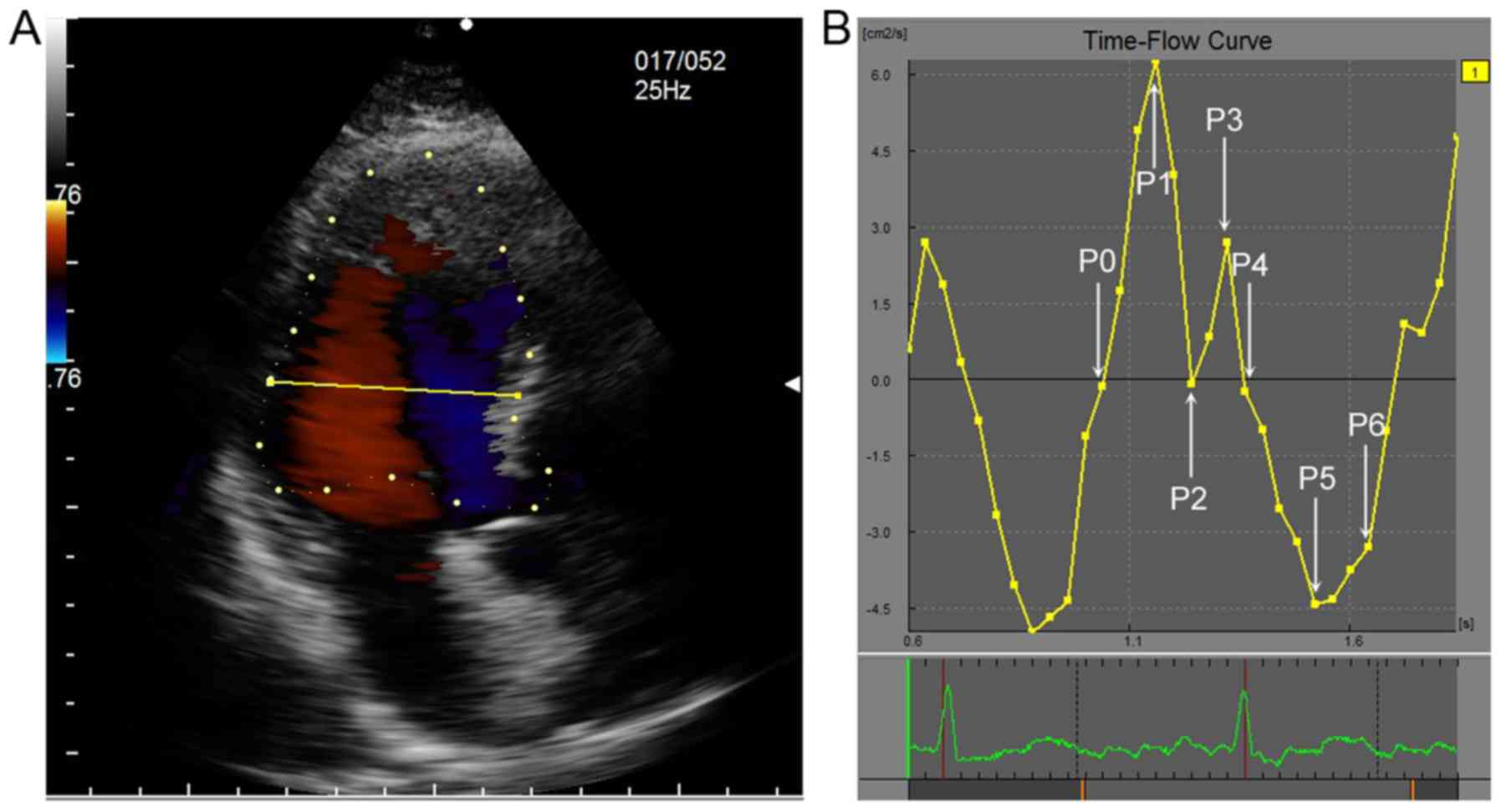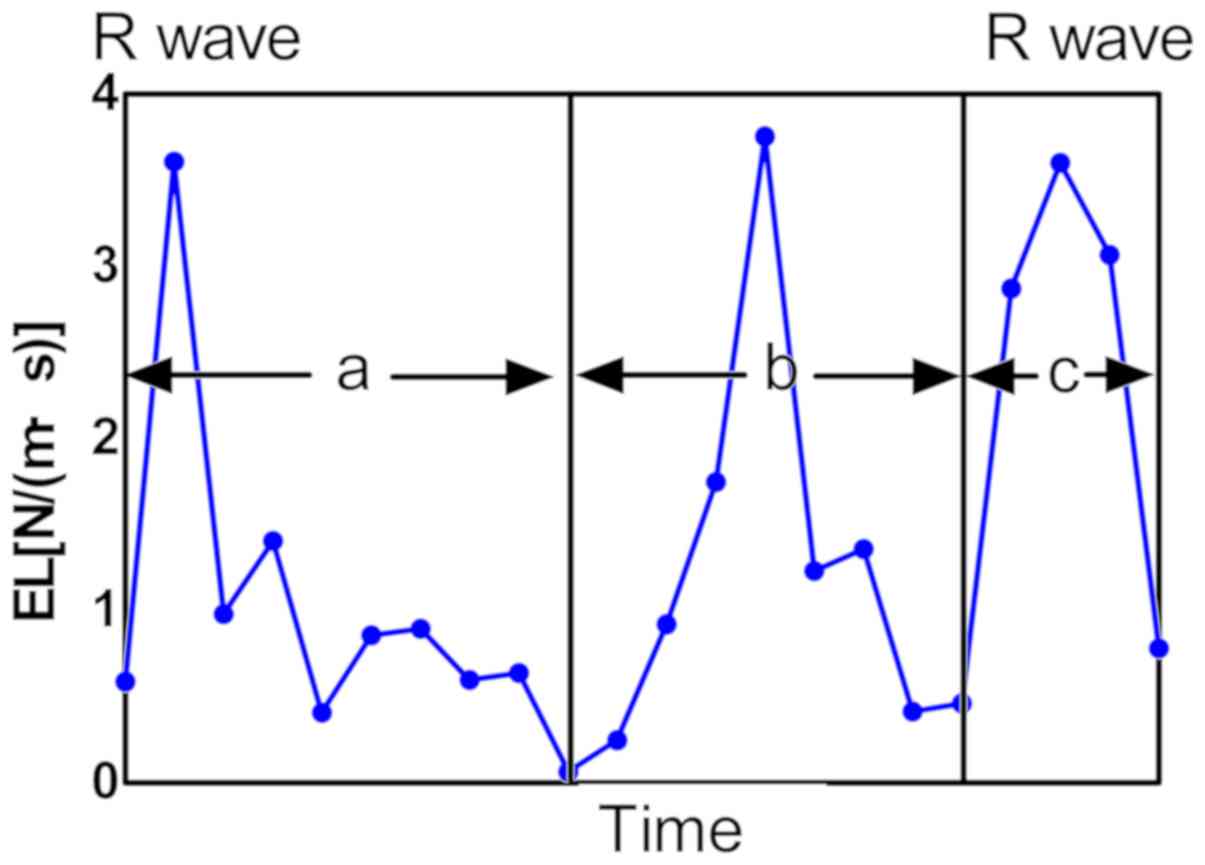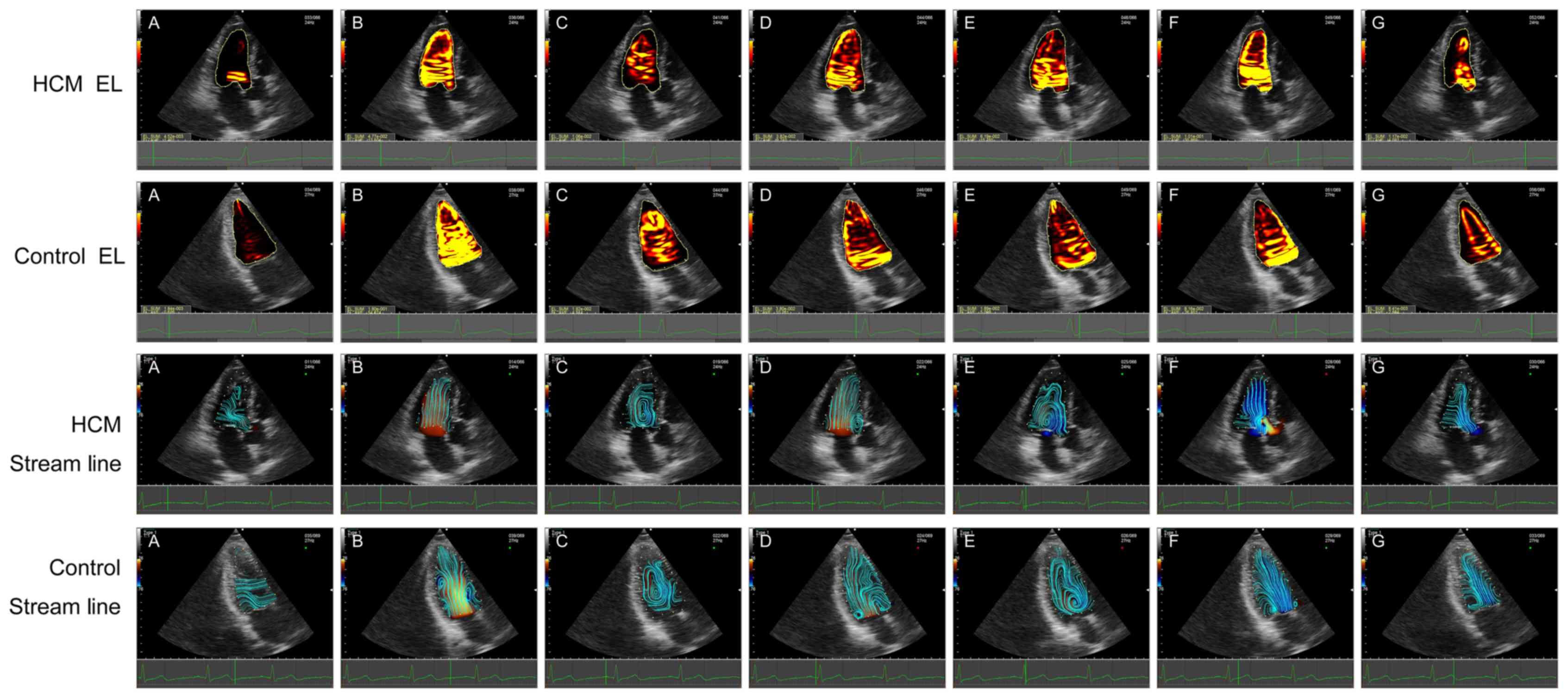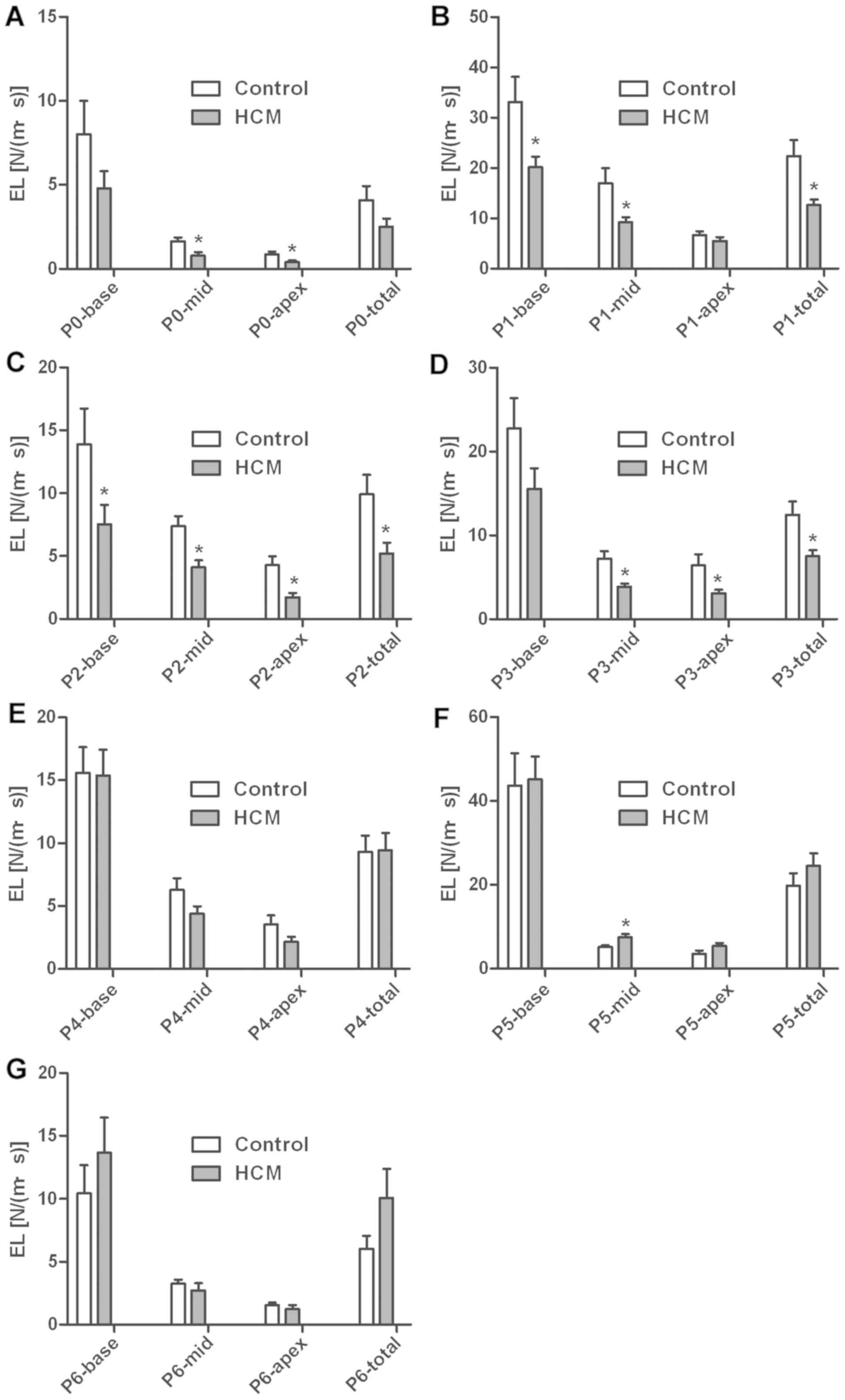|
1
|
Ingles J, Burns C, Bagnall RD, Lam L,
Yeates L, Sarina T, Puranik R, Briffa T, Atherton JJ, Driscoll T
and Semsarian C: Nonfamilial hypertrophic cardiomyopathy:
Prevalence, natural history, and clinical implications. Circ
Cardiovasc Genet. 10(pii): e0016202017.PubMed/NCBI
|
|
2
|
Jacoby DL, DePasquale EC and McKenna WJ:
Hypertrophic cardiomyopathy: Diagnosis, risk stratification and
treatment. CMAJ. 185:127–134. 2013. View Article : Google Scholar : PubMed/NCBI
|
|
3
|
Houston BA and Stevens GR: Hypertrophic
cardiomyopathy: A review. Clin Med Insights Cardiol. 8 (Suppl
1):S53–S65. 2015.
|
|
4
|
Authors/Task Force members, ; Elliott PM,
Anastasakis A, Borger MA, Borggrefe M, Cecchi F, Charron P, Hagege
AA, Lafont A, Limongelli G, et al: 2014 ESC Guidelines on diagnosis
and management of hypertrophic cardiomyopathy: The Task Force for
the diagnosis and management of hypertrophic cardiomyopathy of the
European society of cardiology (ESC). Eur Heart J. 35:2733–2779.
2014. View Article : Google Scholar : PubMed/NCBI
|
|
5
|
Voilliot D, Huttin O, Hammache N,
Filippetti L, Vaugrenard T, Aliot E, Sadoul N, Juillière Y and
Selton-Suty C: Impact of Global and segmental hypertrophy on
two-dimensional strain derived from three-dimensional
echocardiography in hypertrophic cardiomyopathy: Comparison with
healthy subjects. J Am Soc Echocardiogr. 28:1093–1102. 2015.
View Article : Google Scholar : PubMed/NCBI
|
|
6
|
Maron BJ and Maron MS: Hypertrophic
cardiomyopathy. Lancet (London, England). 381:242–255. 2013.
View Article : Google Scholar : PubMed/NCBI
|
|
7
|
Kalra A, Harris KM, Maron BA, Maron MS,
Garberich RF, Haas TS, Lesser JR and Maron BJ: Relation of Doppler
tissue imaging parameters with heart failure progression in
hypertrophic cardiomyopathy. Am J Cardiol. 117:1808–1814. 2016.
View Article : Google Scholar : PubMed/NCBI
|
|
8
|
Saccheri MC, Cianciulli TF, Lax JA, Guerra
JE, Redruello HJ, Weich Glogier FL, Gagliardi JA, Dorelle AN,
Prezioso HA and Vidal LA: Impaired myocardial function in
hypertrophic cardiomyopathy. Echocardiography. 26:657–664. 2009.
View Article : Google Scholar : PubMed/NCBI
|
|
9
|
MacIver DH and Clark AL: Contractile
dysfunction in sarcomeric hypertrophic cardiomyopathy. J Card Fail.
22:731–737. 2016. View Article : Google Scholar : PubMed/NCBI
|
|
10
|
Hayashi T, Itatani K, Inuzuka R, Shimizu
N, Shindo T, Hirata Y and Miyaji K: Dissipative energy loss within
the left ventricle detected by vector flow mapping in children:
Normal values and effects of age and heart rate. J Cardiol.
66:403–410. 2015. View Article : Google Scholar : PubMed/NCBI
|
|
11
|
Kurt M, Wang J, Torre-Amione G and Nagueh
SF: Left atrial function in diastolic heart failure. Circ
Cardiovasc Imaging. 2:10–15. 2009. View Article : Google Scholar : PubMed/NCBI
|
|
12
|
Mancia G, Fagard R, Narkiewicz K, Redon J,
Zanchetti A, Böhm M, Christiaens T, Cifkova R, De Backer G,
Dominiczak A, et al: 2013 ESH/ESC guidelines for the management of
arterial hypertension: The Task force for the management of
arterial hypertension of the European society of hypertension (ESH)
and of the European society of cardiology (ESC). Eur Heart J.
34:2159–2219. 2013. View Article : Google Scholar : PubMed/NCBI
|
|
13
|
Cameli M, Mandoli GE and Mondillo S: Left
atrium: The last bulwark before overt heart failure. Heart Fail
Rev. 22:123–131. 2017. View Article : Google Scholar : PubMed/NCBI
|
|
14
|
Cameli M, Ciccone MM, Maiello M, Modesti
PA, Muiesan ML, Scicchitano P, Novo S, Palmiero P, Saba PS and
Pedrinelli R; Gruppo di Studio Ipertensione, Prevenzione e
Riabilitazione, Società Italiana di Cardiologia, : Speckle tracking
analysis: A new tool for left atrial function analysis in systemic
hypertension: An overview. J Cardiovasc Med (Hagerstown).
17:339–343. 2016. View Article : Google Scholar : PubMed/NCBI
|
|
15
|
Xu HY, Chen J, Yang ZG, Li R, Shi K, Zhang
Q, Liu X, Xie LJ, Jiang L and Guo YK: Early marker of regional left
ventricular deformation in patients with hypertrophic
cardiomyopathy evaluated by MRI tissue tracking: The effects of
myocardial hypertrophy and fibrosis. J Magn Reson Imaging.
46:1368–1376. 2017. View Article : Google Scholar : PubMed/NCBI
|
|
16
|
Ozawa K, Funabashi N, Takaoka H, Kamata T,
Kanaeda A, Saito M, Nomura F and Kobayashi Y: Characteristic
myocardial strain identified in hypertrophic cardiomyopathy
subjects with preserved left ventricular ejection fraction using a
novel multi-layer transthoracic echocardiography technique. Int J
Cardiol. 184:237–243. 2015. View Article : Google Scholar : PubMed/NCBI
|
|
17
|
Kato TS, Noda A, Izawa H, Yamada A, Obata
K, Nagata K, Iwase M, Murohara T and Yokota M: Discrimination of
nonobstructive hypertrophic cardiomyopathy from hypertensive left
ventricular hypertrophy on the basis of strain rate imaging by
tissue Doppler ultrasonography. Circulation. 110:3808–3814. 2004.
View Article : Google Scholar : PubMed/NCBI
|
|
18
|
Oki T, Mishiro Y, Yamada H, Onose Y,
Matsuoka M, Wakatsuki T, Tabata T and Ito S: Detection of left
ventricular regional relaxation abnormalities and asynchrony in
patients with hypertrophic cardiomyopathy with the use of tissue
Doppler imaging. Am Heart J. 139:497–502. 2000. View Article : Google Scholar : PubMed/NCBI
|
|
19
|
Amundsen BH, Helle-Valle T, Edvardsen T,
Torp H, Crosby J, Lyseggen E, Støylen A, Ihlen H, Lima JA, Smiseth
OA and Slørdahl SA: Noninvasive myocardial strain measurement by
speckle tracking echocardiography: Validation against
sonomicrometry and tagged magnetic resonance imaging. J Am Coll
Cardiol. 47:789–793. 2006. View Article : Google Scholar : PubMed/NCBI
|
|
20
|
Cameli M, Mandoli GE, Loiacono F, Dini FL,
Henein M and Mondillo S: Left atrial strain: A new parameter for
assessment of left ventricular filling pressure. Heart Fail Rev.
21:65–76. 2016. View Article : Google Scholar : PubMed/NCBI
|
|
21
|
Stugaard M, Koriyama H, Katsuki K, Masuda
K, Asanuma T, Takeda Y, Sakata Y, Itatani K and Nakatani S: Energy
loss in the left ventricle obtained by vector flow mapping as a new
quantitative measure of severity of aortic regurgitation: A
combined experimental and clinical study. Eur Heart J Cardiovasc
Imaging. 16:723–730. 2015. View Article : Google Scholar : PubMed/NCBI
|
|
22
|
Serri K, Reant P, Lafitte M, Berhouet M,
Le Bouffos V, Roudaut R and Lafitte S: Global and regional
myocardial function quantification by two-dimensional strain:
Application in hypertrophic cardiomyopathy. J Am Coll Cardiol.
47:1175–1181. 2006. View Article : Google Scholar : PubMed/NCBI
|
|
23
|
Urbano-Moral JA, Rowin EJ, Maron MS, Crean
A and Pandian NG: Investigation of global and regional myocardial
mechanics with 3-dimensional speckle tracking echocardiography and
relations to hypertrophy and fibrosis in hypertrophic
cardiomyopathy. Circ Cardiovasc Imaging. 7:11–19. 2014. View Article : Google Scholar : PubMed/NCBI
|
|
24
|
Maron BJ, Spirito P, Green KJ, Wesley YE,
Bonow RO and Arce J: Noninvasive assessment of left ventricular
diastolic function by pulsed Doppler echocardiography in patients
with hypertrophic cardiomyopathy. J Am Coll Cardiol. 10:733–742.
1987. View Article : Google Scholar : PubMed/NCBI
|
|
25
|
Liu W, Sun D and Yang J: Diastolic
dysfunction of hypertrophic cardiomyopathy genotype-positive
subjects without hypertrophy is detected by tissue Doppler imaging:
A systematic review and Meta-analysis. J Ultrasound Med.
36:2093–2103. 2017. View Article : Google Scholar : PubMed/NCBI
|
|
26
|
Ho CY: Hypertrophic cardiomyopathy:
Preclinical and early phenotype. J Cardiovasc Transl Res.
2:462–470. 2009. View Article : Google Scholar : PubMed/NCBI
|
|
27
|
Pedrizzetti G, La Canna G, Alfieri O and
Tonti G: The vortex-an early predictor of cardiovascular outcome?
Nat Rev Cardiol. 11:545–553. 2014. View Article : Google Scholar : PubMed/NCBI
|
|
28
|
Kilner PJ, Yang GZ, Wilkes AJ, Mohiaddin
RH, Firmin DN and Yacoub MH: Asymmetric redirection of flow through
the heart. Nature. 404:759–761. 2000. View Article : Google Scholar : PubMed/NCBI
|
|
29
|
Gharib M, Rambod E, Kheradvar A, Sahn DJ
and Dabiri JO: Optimal vortex formation as an index of cardiac
health. Proc Natl Acad Sci USA. 103:6305–6308. 2006. View Article : Google Scholar : PubMed/NCBI
|
|
30
|
Borazjani I, Westerdale J, McMahon EM,
Rajaraman PK, Heys JJ and Belohlavek M: Left ventricular flow
analysis: Recent advances in numerical methods and applications in
cardiac ultrasound. Comput Math Methods Med. 2013:3950812013.
View Article : Google Scholar : PubMed/NCBI
|
|
31
|
Abe H, Caracciolo G, Kheradvar A,
Pedrizzetti G, Khandheria BK, Narula J and Sengupta PP: Contrast
echocardiography for assessing left ventricular vortex strength in
heart failure: A prospective cohort study. Eur Heart J Cardiovasc
Imaging. 14:1049–1060. 2013. View Article : Google Scholar : PubMed/NCBI
|
|
32
|
Maron BJ: Hypertrophic cardiomyopathy: A
systematic review. JAMA. 287:1308–1320. 2002. View Article : Google Scholar : PubMed/NCBI
|
|
33
|
Butz T, van Buuren F, Mellwig KP, Langer
C, Plehn G, Meissner A, Trappe HJ, Horstkotte D and Faber L:
Two-dimensional strain analysis of the global and regional
myocardial function for the differentiation of pathologic and
physiologic left ventricular hypertrophy: A study in athletes and
in patients with hypertrophic cardiomyopathy. Int J Cardiovasc
Imaging. 27:91–100. 2011. View Article : Google Scholar : PubMed/NCBI
|
|
34
|
Aly MF, Brouwer WP, Kleijn SA, van Rossum
AC and Kamp O: Three-dimensional speckle tracking echocardiography
for the preclinical diagnosis of hypertrophic cardiomyopathy. Int J
Cardiovasc Imaging. 30:523–533. 2014. View Article : Google Scholar : PubMed/NCBI
|
|
35
|
Cameli M, Sparla S, Losito M, Righini FM,
Menci D, Lisi M, D'Ascenzi F, Focardi M, Favilli R, Pierli C, et
al: Correlation of left atrial strain and Doppler measurements with
invasive measurement of left ventricular End-diastolic pressure in
patients stratified for different values of ejection fraction.
Echocardiography. 33:398–405. 2016. View Article : Google Scholar : PubMed/NCBI
|
|
36
|
Lakatta EG and Levy D: Arterial and
cardiac aging: Major shareholders in cardiovascular disease
enterprises: Part II: The aging heart in health: links to heart
disease. Circulation. 107:346–354. 2003. View Article : Google Scholar : PubMed/NCBI
|
|
37
|
Cameli M, Mandoli GE, Loiacono F, Sparla
S, Iardino E and Mondillo S: Left atrial strain: A useful index in
atrial fibrillation. Int J Cardiol. 220:208–213. 2016. View Article : Google Scholar : PubMed/NCBI
|
|
38
|
Paraskevaidis IA, Panou F, Papadopoulos C,
Farmakis D, Parissis J, Ikonomidis I, Rigopoulos A, Iliodromitis EK
and Th Kremastinos D: Evaluation of left atrial longitudinal
function in patients with hypertrophic cardiomyopathy: A tissue
Doppler imaging and two-dimensional strain study. Heart.
95:483–489. 2009. View Article : Google Scholar : PubMed/NCBI
|
|
39
|
Pavlopoulos H and Nihoyannopoulos P: Left
atrial size: A structural expression of abnormal left ventricular
segmental relaxation evaluated by strain echocardiography. Eur J
Echocardiogr. 10:865–871. 2009. View Article : Google Scholar : PubMed/NCBI
|
|
40
|
Wang Y, Hou D, Ma R, Ding G, Yin L and
Zhang M: Early detection of left atrial energy loss and mechanics
abnormalities in diabetic patients with normal left atrial size: A
study combining vector flow mapping and tissue tracking
echocardiography. Med Sci Monit. 22:958–968. 2016. View Article : Google Scholar : PubMed/NCBI
|














